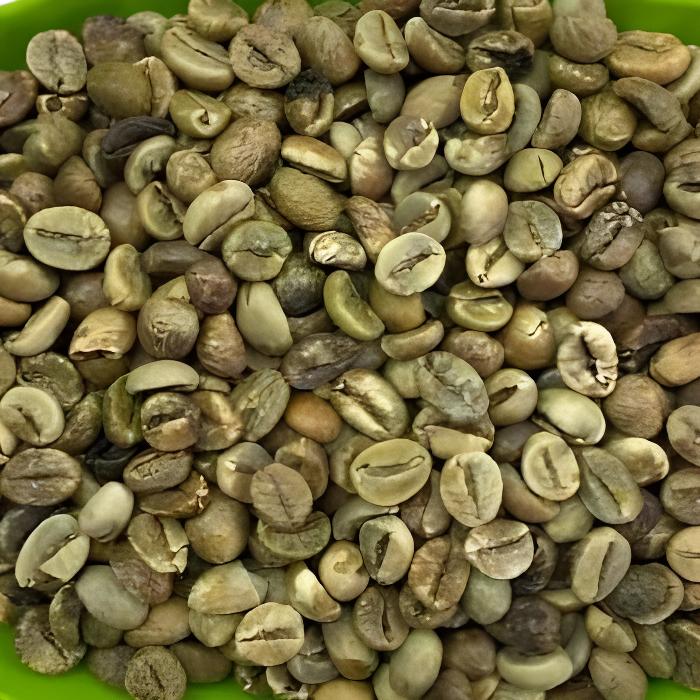Where to Buy Good Coffee Beans?
For coffee aficionados, the journey to the perfect cup begins with high-quality coffee beans. The aroma, flavor, and richness of your brew largely depend on the beans you choose. Whether you’re an aspiring home barista or a coffee shop owner seeking premium beans, finding the right source is crucial. In this guide, we’ll explore various avenues to purchase exceptional coffee beans, both online and offline, ensuring you elevate your coffee experience. So, where to buy good coffee beans?
Table of Contents
Types of Coffee Beans
Before diving into where to buy, let’s briefly discuss the types of coffee beans available:
1. Arabica Coffee Beans
Characteristics:
- Flavor Profile: Known for their nuanced flavors, Arabica beans often exhibit a wide range of taste notes, including fruity, floral, nutty, and chocolatey.
- Acidity: Typically have a higher acidity level, contributing to their bright and lively taste.
- Growing Conditions: Grown at higher altitudes in regions with cooler temperatures, such as Central and South America, Africa, and parts of Asia.
- Caffeine Content: Lower caffeine content compared to Robusta beans.
Popular Varieties:
- Ethiopian Yirgacheffe: Renowned for its bright acidity, floral aroma, and distinctively fruity notes.
- Colombian Supremo: Known for its medium body, balanced acidity, and nutty undertones.
- Costa Rican Tarrazu: Offers a bright acidity, full body, and sweet citrus flavors.
2. Robusta Coffee Beans

Characteristics:
- Flavor Profile: Robusta beans tend to have a stronger, more intense flavor with earthy, woody, and sometimes nutty notes.
- Acidity: Lower acidity compared to Arabica beans, resulting in a more bitter taste.
- Growing Conditions: Thrive in lower elevations with warmer climates, commonly found in Africa, Southeast Asia, and parts of South America.
- Caffeine Content: Robusta beans contain significantly higher caffeine levels compared to Arabica beans.
Popular Varieties:
- Vietnamese Robusta: Known for its bold, chocolaty flavor and strong caffeine kick.
- Ugandan Robusta: Exhibits a full-bodied profile with woody, spicy, and sometimes winey notes.
- Indian Robusta: Offers a rich, full-bodied taste with hints of chocolate and a bold finish.
3. Single-Origin vs. Blends
Single-Origin Beans:
- Characteristics: Sourced from a specific region or farm, offering unique flavor profiles influenced by the area’s climate, soil, and altitude.
- Advantages: Provide distinct and traceable flavors, allowing enthusiasts to appreciate the terroir of the beans.
- Examples: Ethiopian Sidamo, Guatemalan Antigua, Brazilian Santos.
Coffee Blends:
- Characteristics: Combines beans from different regions or varieties to create balanced and consistent flavor profiles.
- Advantages: Blend different beans to achieve a desired taste profile, balancing acidity, body, and flavor notes.
- Examples: Breakfast blends, espresso blends, and house blends offered by various roasters.
4. Emerging and Specialty Varieties
Geisha (or Gesha):
- Characteristics: Known for its exceptional quality, Geisha beans often fetch premium prices. They typically feature floral, tea-like notes with vibrant acidity.
- Growing Regions: Originally from Ethiopia but now cultivated in Panama, Costa Rica, Colombia, and other countries.
Bourbon:
- Characteristics: Exhibits a sweet and complex profile with a range of flavors, including fruity and caramel notes.
- Growing Regions: Found in Central and South America, Africa, and other regions.
Pacamara:
- Characteristics: A hybrid variety known for its large bean size and complex flavors, combining attributes from both Pacas and Maragogipe beans.
- Growing Regions: Predominantly found in El Salvador and other Central American countries.
Where to Buy Good Coffee Beans?
1. Specialty Coffee Shops
Advantages:
- Expertise: Staff can offer advice on bean types, roast levels, and brewing methods.
- Freshness: Often roast beans in-house or source from local roasters, ensuring freshness.
- Variety: Curate a diverse selection of single-origin and blended beans.
2. Local Roasters
Advantages:
- Freshness: Roast in small batches, ensuring freshness and quality.
- Unique Selection: Often offer exclusive beans and experimental roasts.
- Community Engagement: Engage with the local coffee community and support small businesses.
3. Online Retailers
Advantages:
- Variety: Access to a vast array of beans from global suppliers.
- Convenience: Easy ordering and delivery options, often with subscriptions for regular deliveries.
- Reviews and Ratings: User feedback helps in choosing reputable sellers.
4. Farmer’s Markets and Co-ops
Advantages:
- Direct Sourcing: Connect directly with growers for unique beans and support ethical practices.
- Freshness and Transparency: Often offer freshly harvested beans with clear traceability.
5. Grocery Stores and Supermarkets
Advantages:
- Accessibility: Widely available with various options in terms of brands and origins.
- Convenience: Suitable for those seeking standard coffee options at affordable prices.
Factors to Consider When Buying Coffee Beans
1. Roast Date
Always prioritize freshness. Look for beans with a recent roast date. For optimal flavor, use within 2-4 weeks of roasting.
2. Bean Quality
Check for high-quality beans, free from defects, and with uniform color and size.
3. Packaging
Opt for airtight and opaque packaging to protect the beans from light, air, and moisture, preserving their freshness.
4. Origin and Variety
Consider your preference for taste. Experiment with different origins and varieties to explore diverse flavor profiles.
5. Roast Level
Choose a roast level based on your preference—light roasts maintain more of the bean’s original flavors, while dark roasts have a richer, more robust taste.
Tips for Buying Coffee Beans
1. Sample Packs for Exploration
When exploring new beans or suppliers, opt for sample packs. These smaller quantities allow you to experiment without committing to larger amounts. Sample packs often include various bean origins and roasts, enabling you to discover new flavors and preferences before making a larger purchase.
2. Seek Recommendations and Expertise
Don’t hesitate to seek advice. Baristas at specialty coffee shops or local roasters are often passionate about their craft and eager to share their knowledge. They can offer valuable insights into different bean varieties, roasts, and brewing methods based on your preferences.
3. Online Reviews and Communities
Leverage online platforms and coffee communities. Websites, forums, and social media platforms dedicated to coffee often host discussions, reviews, and recommendations from fellow coffee enthusiasts. Reading reviews and engaging in these communities can provide valuable insights into specific brands, roasts, or sellers.
4. Consider Your Brewing Method
Your preferred brewing method significantly impacts the type of beans you should purchase. For instance, espresso requires finely ground beans and often benefits from darker roasts, while pour-over methods might accentuate the nuances of lighter roasts. Understanding how your chosen brewing method interacts with different bean types and roasts will guide your purchasing decisions.
5. Understand Labels and Descriptions
Familiarize yourself with the information provided on coffee bean packaging. Labels often include details about the bean’s origin, flavor notes, roast level, and processing method. Understanding these descriptions helps in selecting beans that align with your taste preferences.
6. Check for Freshness
Freshness is crucial for flavorful coffee. Look for beans with a recent roast date. Beans begin to lose their flavor and aroma within a few weeks of roasting. Ensure the packaging provides a clear indication of when the beans were roasted.
7. Consider Ethical Sourcing and Certifications
For those concerned with ethical sourcing practices, certifications like Fair Trade or Rainforest Alliance indicate that the beans were sourced sustainably and the growers were paid fairly. These certifications promote ethical and environmentally friendly coffee production.
8. Explore Direct Trade or Farm-Specific Beans
Direct trade beans often offer transparency and a closer connection between the consumer and the coffee farmer. Some companies establish direct relationships with farmers, ensuring fair compensation and high-quality beans. Farm-specific beans allow you to experience the unique characteristics of a particular farm’s harvest.
9. Storage and Shelf Life
Understand how to store your coffee beans properly. To preserve freshness, store beans in an airtight container in a cool, dark place. Avoid storing them in the fridge or freezer as moisture can affect the beans’ flavor. Additionally, aim to consume the beans within 2-4 weeks of the roast date for the best taste.
10. Budget Considerations
While quality often correlates with price, there are excellent beans available at various price points. Determine your budget and explore options within that range. Remember, the best beans for you may not always be the most expensive ones.
Conclusion
Finding good coffee beans involves a blend of personal preference, exploration, and knowledge of where to look. Whether you prefer the convenience of online shopping, the expertise of local roasters, or the engagement of visiting specialty shops, the key is to prioritize freshness, quality, and your own taste preferences. By considering these factors and exploring various sources, you’ll elevate your coffee experience and savor every cup of your brewed masterpiece.











